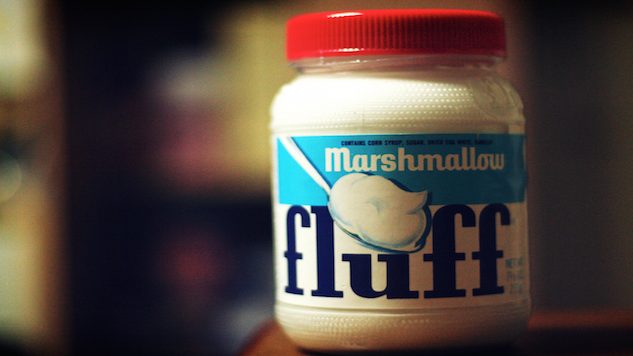The 100-Year History of Marshmallow Fluff
Photo: Ginny/Flickr
As a kid I loved making Fluffernutter sandwiches almost as much as eating them. I’d carefully paint one slice of bread with peanut butter and then frost it with the fluff slowly and carefully until every inch of bread was covered. There is still is something so comforting about that combination; the gooey sweet fluff, the smooth peanut butter and the soft, often crust-free slices of plain white bread. Even now the word “fluffernutter” makes me think back fondly of having a snack and doing homework in my parents’ old avocado-and-orange-colored kitchen.
Marshmallow Fluff looks like the ultimate mid-century concoction, a big jar of delicious, nearly nutrient-free sugary goop with an almost infinite shelf life. You’d be forgiven for thinking it was developed in a lab by the same NASA scientists who invented Tang, but you’d still be wrong. According to Mimi Graney, author of Fluff: the Sticky Sweet Story of an American Icon (Union Square Press, 2017), the mixture was invented exactly one hundred years ago by Archibald Query in his home kitchen in Somerville, Mass. The ingredients he started with in 1917 are the same ingredients Fluff is made with today: egg whites, sugar, corn syrup and vanillin.
Query sold his confection door-to-door until World War I brought sugar shortages that halted production. After the war he sold the recipe to Bay State manufacturer Durkee Mower, who have been making Fluff ever since.
The popularity of Fluff is the result of Durkee Mower’s clever advertising and marketing strategies that often bordered on brilliant. In the 1930s they sponsored a radio show starring a group they called The Flufferettes. The shows included short sketches and a fictional Boston Brahmin scholar named Lowell Cabot presenting fractured tales from American history. At the end of each episode, listeners were invited to read the Book of the Moment, which always turned out to be a collection of recipes with the very unscholarly title “The Yummy Book.” (An updated version of the original volume is available for download on the Fluff corporate website.) It was also Durkee Mower who popularized the classic sandwich in the 1950s with an advertising blitz christening the combo the Fluffernutter.
-

-

-

-

-

-

-

-

-

-

-

-

-

-

-

-

-

-

-

-

-

-

-

-

-

-

-

-

-

-

-

-

-

-

-

-

-

-

-

-








































